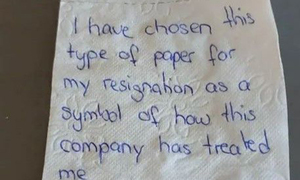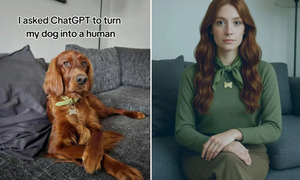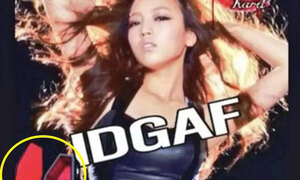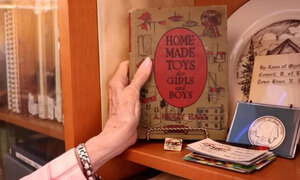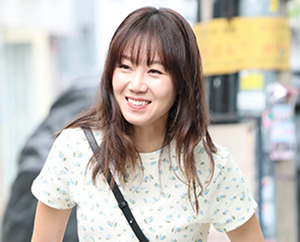Young voters have surged in registration and turnout this year, portending more political potency for this cohort of Americans. Most believe the participatory swell is due to Barack Obama’s bid for the White House over the past year. And indeed, ballooning turnout and young voters’ support could propel the Illinois senator into the Oval Office.
But beyond Obama-induced excitement this year, younger voters have been undergoing a transformation in American politics for over a decade - a tilt toward the Democratic Party that predates this year’s boom.
Young voters became more reliably Democratic in the 1990s. Prior to that time, voters under 30 sided with Republicans in six out of the 10 presidential elections between 1952 and 1992. But then Bill Clinton inaugurated a sharp movement of younger voters against the Republican Party. When it comes to presidential vote choice, those under 30 have now moved reliably into the Democratic camp. Americans under 30 - since 1992 - are now a rock-solid Democratic constituency when it comes to presidential voting.
These voting trends are confirmed in more recent 2008 polling information about the partisan identification of younger Americans.
Pew Research, in an April 28 report, for example, finds Democrats now lead in party identification among voters under age 30 by a 58 percent-33 percent margin. The partisan divide is particularly large among young women who now identify with Democrats by a whopping 35 points (63 percent-28 percent).
But what about turnout? Don’t those under 30 participate at a much lower rate compared to other citizens? Not really.
It’s true younger Americans exhibit lower levels of registration compared to those over 65 years of age. Yet the proportion of the electorate represented by people 18-29 is about the same as that made up of senior citizens. Voters under 30 constituted slightly more than 20 percent of the electorate during the 1970s and then stayed at about that level, declining slightly to 17 percent in 1996, 2000 and 2004, matching almost exactly the proportion of those 65 and older in presidential elections.
These sharp identification gains and anti-Republican voting patterns could spell long-term problems for the Republican Party. If today’s cohort of new partisans remains committed - and votes that way - they could provide an electoral boon to the Democrats for a generation.
미국의 청년 투표성향 변화
개리 앤드리스(美 칼럼니스트)
올해 청년 유권자들의 유권자 등록과 투표가 급격히 늘어나 이 연령대 미국인들의 정치적 영향력 증대를 예고했다. 지난 1년에 걸친 버락 오바마의 백악관 입성 시도가 이 같은 참여의 급격한 증가 원인이라고 대다수 전문가들은 생각한다. 투표인 수의 급증과 청년 유권자들의 지지는 일리노이 출신 상원의원을 실제로 대통령 집무실에 진입시킬 수 있다.
그러나 올해 오바마가 일으킨 흥분 저편에는, 지난 10년 동안 미국 정치에서 청년 유권자들이 변화한 사실이 존재한다. 즉 청년 유권자들의 민주당 편향 추세가, 올해 유권자 참여 급증에 앞서 나타났던 것이다.
청년 유권자들의 민주당 지지는 1990년대에 더욱 신뢰도가 높아졌다. 90년대 이전의 30세 미만 유권자들은 1952년부터 1992년까지 10차례 대통령 선거에서 공화당 후보를 6번 지지했다. 그러던 중 빌 클린턴이 청년 유권자들이 공화당에 반대하는 맹렬한 운동을 발족시켰다. 대통령 후보 선택의 경우 30세 미만 유권자들의 민주당 진영 지지는 이제 더욱 신뢰도가 높아졌다. 1992년 이후 30세 미만 미국인들은 대통령 선거의 경우 확고하게 민주당을 지지하는 유권자 층이 되었다.
이러한 투표 경향은, 젊은 미국인들의 당 소속에 관한 정보를 2008년에 조사한 최신 자료에 의해 확인된다.
예를 들어 4월28일 발표한 퓨 리서치의 보고서는 30세 미만 유권자들의 당 소속 선택에서 민주당원이 58% 대 38% 차이로 우세하다. 현재 압도적인 35%포인트(63% 대 28%) 차로 민주당 소속을 선택하는 젊은 여성들 가운데서 이런 당원 격차가 특히 크게 벌어진다.
그러나 투표의 경우는 어떤가. 30세 미만 유권자들은 다른 시민들과 비교하여 훨씬 낮은 참여율을 보이는 것이 아닐까. 사실은 그렇지 않다.
젊은 미국인들은 65세 이상 시민들과 비교하여 등록 수준이 낮은 것으로 나타난다. 그러나 18∼29세 시민들이 차지하는 유권자 비율은 고령 시민들의 비율과 거의 같다. 30세 미만 유권자들은 1970년대에 전체 유권자의 20%를 약간 넘었으며 그 이후 1996년과 2000년 및 2004년에 17%로 약간 내려갔으나 거의 비슷한 수준을 유지했다. 이는 대통령 선거에서 65세 이상 유권자의 비율과 거의 정확하게 같다.
이처럼 급격한 민주당 소속 유권자의 증가 및 반공화당 투표 패턴은 공화당에 각종 장기적인 문제를 야기할 수 있다. 만약 현재의 신규 당원 집단이 계속 충성심을 유지하고 그런 방향으로 투표할 경우 그들은 한 세대 동안 선거에서 민주당을 유리하게 만들 수 있다.
역주=오성환 외신전문위원
suhwo@segye.com
해설판 in.segye.com/english 참조
▲potency:잠재력, 힘
▲electorate:선거민, 유권자
▲boon:혜택, 이익
개리 앤드리스(美 칼럼니스트)
올해 청년 유권자들의 유권자 등록과 투표가 급격히 늘어나 이 연령대 미국인들의 정치적 영향력 증대를 예고했다. 지난 1년에 걸친 버락 오바마의 백악관 입성 시도가 이 같은 참여의 급격한 증가 원인이라고 대다수 전문가들은 생각한다. 투표인 수의 급증과 청년 유권자들의 지지는 일리노이 출신 상원의원을 실제로 대통령 집무실에 진입시킬 수 있다.
그러나 올해 오바마가 일으킨 흥분 저편에는, 지난 10년 동안 미국 정치에서 청년 유권자들이 변화한 사실이 존재한다. 즉 청년 유권자들의 민주당 편향 추세가, 올해 유권자 참여 급증에 앞서 나타났던 것이다.
청년 유권자들의 민주당 지지는 1990년대에 더욱 신뢰도가 높아졌다. 90년대 이전의 30세 미만 유권자들은 1952년부터 1992년까지 10차례 대통령 선거에서 공화당 후보를 6번 지지했다. 그러던 중 빌 클린턴이 청년 유권자들이 공화당에 반대하는 맹렬한 운동을 발족시켰다. 대통령 후보 선택의 경우 30세 미만 유권자들의 민주당 진영 지지는 이제 더욱 신뢰도가 높아졌다. 1992년 이후 30세 미만 미국인들은 대통령 선거의 경우 확고하게 민주당을 지지하는 유권자 층이 되었다.
이러한 투표 경향은, 젊은 미국인들의 당 소속에 관한 정보를 2008년에 조사한 최신 자료에 의해 확인된다.
예를 들어 4월28일 발표한 퓨 리서치의 보고서는 30세 미만 유권자들의 당 소속 선택에서 민주당원이 58% 대 38% 차이로 우세하다. 현재 압도적인 35%포인트(63% 대 28%) 차로 민주당 소속을 선택하는 젊은 여성들 가운데서 이런 당원 격차가 특히 크게 벌어진다.
그러나 투표의 경우는 어떤가. 30세 미만 유권자들은 다른 시민들과 비교하여 훨씬 낮은 참여율을 보이는 것이 아닐까. 사실은 그렇지 않다.
젊은 미국인들은 65세 이상 시민들과 비교하여 등록 수준이 낮은 것으로 나타난다. 그러나 18∼29세 시민들이 차지하는 유권자 비율은 고령 시민들의 비율과 거의 같다. 30세 미만 유권자들은 1970년대에 전체 유권자의 20%를 약간 넘었으며 그 이후 1996년과 2000년 및 2004년에 17%로 약간 내려갔으나 거의 비슷한 수준을 유지했다. 이는 대통령 선거에서 65세 이상 유권자의 비율과 거의 정확하게 같다.
이처럼 급격한 민주당 소속 유권자의 증가 및 반공화당 투표 패턴은 공화당에 각종 장기적인 문제를 야기할 수 있다. 만약 현재의 신규 당원 집단이 계속 충성심을 유지하고 그런 방향으로 투표할 경우 그들은 한 세대 동안 선거에서 민주당을 유리하게 만들 수 있다.
역주=오성환 외신전문위원
suhwo@segye.com
해설판 in.segye.com/english 참조
▲potency:잠재력, 힘
▲electorate:선거민, 유권자
▲boon:혜택, 이익
[ⓒ 세계일보 & Segye.com, 무단전재 및 재배포 금지]
![[설왕설래] 해병대전우회](http://img.segye.com/content/image/2025/04/18/128/20250418500033.jpg
)
![[기자가만난세상] 지자체장 대선 경선行, 행정공백 우려](http://img.segye.com/content/image/2025/04/17/128/20250417521238.jpg
)
![[세계와우리] 美·中 극한 경쟁, 한국의 선택지는](http://img.segye.com/content/image/2025/04/17/128/20250417521375.jpg
)
![[조경란의얇은소설] 너무 늦기 전에](http://img.segye.com/content/image/2025/04/17/128/20250417521269.jpg
)
